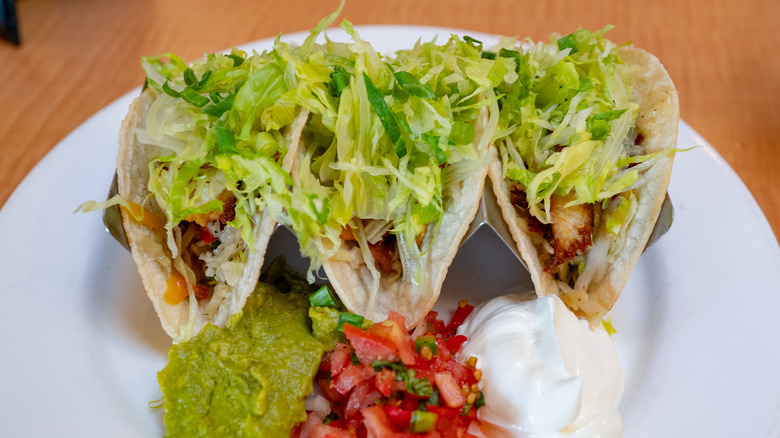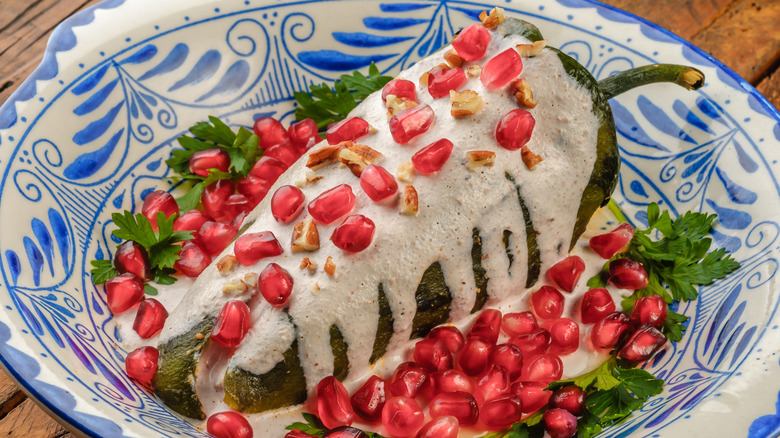How Colors Can Give Mexican Food More Meaning
Demonstrating patriotism through food can be a fun way of celebrating a national holiday, something we often see around the Fourth of July when fruit-decorated flag cakes, iconic bomb pops, and other red-white-and-blue desserts are out in full force. The Mexican counterpart to July 4 is September 16, which is the anniversary of the date in 1810 when a priest rallied his congregation to fight against Spanish rule. El Grito, not Cinco de Mayo, is the true Mexican Independence Day and also marks the start of Hispanic Heritage Month, so this is an occasion when some cooks honor the Mexican flag in culinary form.
Gabriel Kolofon (executive chef at the St. Regis resort in Punta Mita, Mexico, since 2014) has been known to salute the flag with dishes such as green guacamole topped with white cotija cheese and red pico de gallo. While the dish may be simple, the meaning is deep. Not only do the colors reflect the stripes on the Mexican flag, but also — as Kolofon told the Today show — "The green color signifies hope and prosperity, the white represents peace, and the red symbolizes the blood of Mexican heroes."
This could also be said of other foods and beverages combining red, white, and green colors such as tacos topped with salsa roja, salsa verde, and crema or a tomato juice Michelada with a salt rim and a lime wheel garnish. So, keep this color scheme in mind if you're planning a Mexican-themed fiesta.
One traditional Mexican dish also honors the nation's flag
While chiles en nogada is a more complex dish than Gabriel Kolofon's colorful guacamole, the inspiration for these stuffed green chiles topped with white sauce and red fruit is also a patriotic one. It dates back to 1821 when it was created by nuns in Puebla to honor Mexican Army commander Agustín de Iturbide for signing a treaty granting Mexico its independence. Today, many Mexicans see it as the country's national dish and, although it can be labor-intensive, it's practically de rigueur for El Grito celebrations.
Chiles en nogada is similar to chiles rellenos and, in a wider context, belongs to the global stuffed pepper family that also includes Hungarian toltott paprika and Arabian filfil mahshi. The filling is made from ground meat and may include such mix-ins as almonds, apples, olives, onions, peaches, pears, plantains, raisins, and tomatoes. The green peppers are mildly-spicy poblanos, while the white sauce is made from walnuts, almonds, cream, and queso fresco. As for the red, this comes from a sprinkling of pomegranate seeds used to garnish the dish.
Ironically, even though pomegranates are used to supply the final flag color in commemoration of the day the nation shook off its Spanish yoke, Spanish colonists were the ones who introduced the fruit to Mexico. Still, Spain and Mexico have long since ceased their hostilities, and the pomegranates certainly add to the visual appeal of this flavorful dish suited for any festive occasion.

